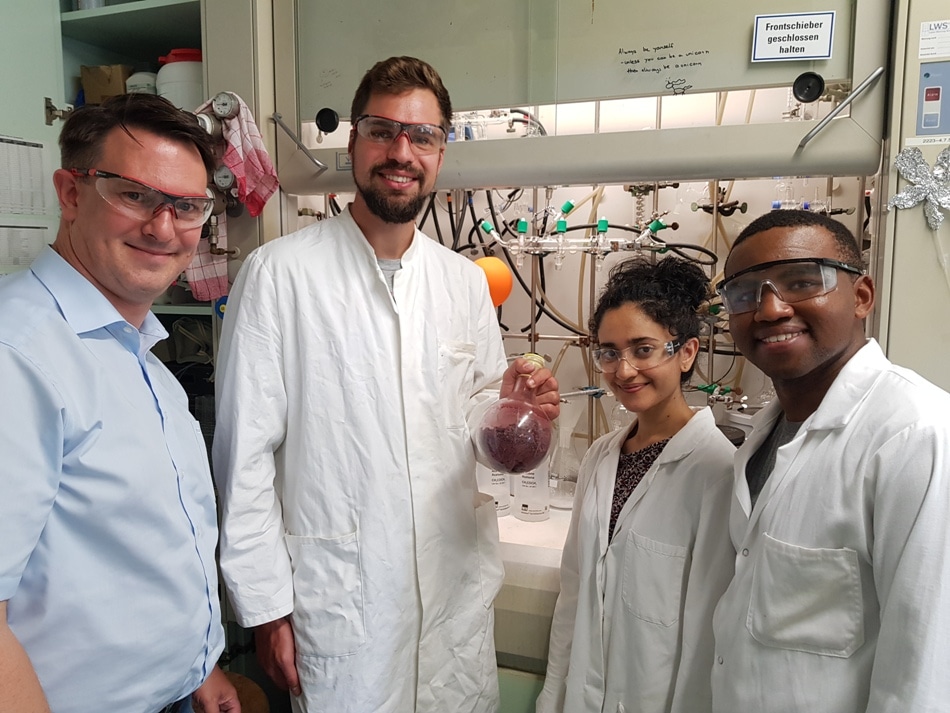Sep 2 2019
Scientists at Johannes Gutenberg University Mainz (JGU) in Germany, in association with colleagues from the University of the Witwatersrand in Johannesburg in South Africa and the University of Dar-es-Salaam in Tanzania, were successful in using cashew nut shell liquid (CNSL) as a replacement for petroleum in organic synthesis.
 Scientists from Mainz and Johannesburg with a sample of the starting material for UV absorber from cashew nut shell liquid. (Image credit: Opatz Lab)
Scientists from Mainz and Johannesburg with a sample of the starting material for UV absorber from cashew nut shell liquid. (Image credit: Opatz Lab)
The researchers’ focus was to develop a sustainable synthesis of soluble organic UV filters.
The ultraviolet (UV) region of solar radiation is a possible health hazard for humans and livestock. Widespread exposure may result in premature aging of the skin and even severe forms of cancer. Furthermore, the negative power of natural UV radiation can also damage coatings, paints, and even plastics.
One option to avoid radiation-induced damage is to use chemical UV filters. These can either be mineral pigments like organic compounds comprising carbon atoms or titanium dioxide (titanium white). Both are used as paint additives, as active ingredients in sunscreen, or as additives for the materials to be safeguarded.
Presently, both classes of UV filters are under criticism for various reasons. The toxicity of a few of the organic filters towards aquatic life is challenging. Regrettably, practically all organic filters—and the huge majority of all other organic chemicals presently available—are being made from petroleum.
The international team of scientists led by Professor Till Opatz of the JGU Institute of Organic Chemistry and Professor Charles de Koning from Johannesburg used CNSL instead as a renewable starting material for the manufacture of new UV filters.
CNSL is made in large quantity during the production of the nuts and cannot be used as feed or food. Therefore, there is no competition between the production of foodstuff and the use as a chemical raw material. The utilization of CNSL can be seen as an example of xylochemistry, wherein woody biomass acts as the carbon source for chemical synthesis.
The application of these chemically well-defined UV absorbers made in this manner in sunscreens, their compatibility with human skin, and their impacts on various life forms are yet to be examined. This study, however, is beyond the scope of the existing project sponsored by the German Federal Ministry of Education and Research (BMBF) and the South African partner organization NRF and will require partnership with industry.